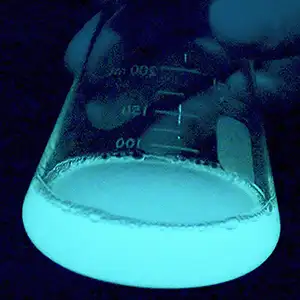
Glowing, 'milky seas' phenomenon has stumped scientists for 400 years
For centuries, sailors navigating the remote oceans have described a surreal experience: vast stretches of ocean glowing steadily through the night, casting a soft white or greenish light across the waves.
These luminous expanses, dubbed “milky seas,” are so bright they can illuminate a ship’s deck and can even be spotted from space, covering areas as much as 100,000 square kilometers.
Researchers at Colorado State University (CSU) have compiled the most comprehensive database to date of these rare and mysterious events, combining 400 years of sailor reports, data from the Marine Observer Journal, and modern satellite imagery.
The project aims to transform folklore into scientific fact and uncover how these bioluminescent seas are linked to large-scale Earth systems.
A glowing ocean mystery
Despite the long history of reported sightings, milky seas remain largely unexplained. They are thought to be caused by the activity of Vibrio harveyi, a luminous bacterium that may form vast blooms under the right conditions.
But because these events are rare and usually occur in the remote Indian Ocean, very little data has been gathered to confirm the theory.
“It is really hard to study something if you have no data about it,” said Justin Hudson, a PhD student at CSU and the paper’s lead author.
“To this point, there is only one known photograph at sea level that came from a chance encounter by a yacht in 2019. So, there is a lot left to learn about how and why this happens and what the impacts are to those areas that experience this.”
Turning sailor folklore into scientific data
The newly assembled database traces reports of milky seas back to the 17th century, documenting when and where they occurred, and matching those accounts with satellite imagery and known climate cycles.
Hudson and his team discovered that most milky sea events cluster around the Arabian Sea and waters near Southeast Asia, and appear to be influenced by large-scale climate phenomena such as the Indian Ocean Dipole and the El Niño Southern Oscillation.

“The regions where this happens the most are around the northwest Indian Ocean near Somalia and Socotra, Yemen, with nearly 60% of all known events occurring there,” Hudson explained.
“At the same time, we know the Indian monsoon’s phases drive biological activity in the region through changes in wind patterns and currents.”
This suggests that the glowing phenomenon may not be random, but rather tied to broader cycles of biological and oceanographic activity.
Milky seas may turn out to be a valuable indicator of carbon and nutrient flows in the global system – especially if bacteria are playing a larger role than previously thought.
The biology of milky seas
Bioluminescence isn’t rare in nature – fireflies and glowing jellyfish are well-known examples. But what sets milky seas apart is their scale and persistence.
One of the few clues scientists have about their biology comes from a 1985 research vessel that accidentally sailed through a glowing sea and collected a water sample.
The sample revealed luminous bacteria coating the surface of algae in a large bloom, potentially explaining the uniform glow. Still, with only one such sample ever taken, more evidence is needed.

According to Hudson, the goal is to send a research vessel out to the site in time to collect information about the biology and chemistry of milky seas. That could be tricky.
So far, no one has managed to deliberately reach a milky sea in time to study it. But with the new database, scientists hope to improve their odds by predicting when and where future events might occur.
Gateway to Earth system science
Professor Steven Miller, Hudson’s research advisor and co-author of the study, has long been fascinated by milky seas and helped pioneer efforts to image them from satellites.
For him, this research is about more than solving an old oceanic mystery – it’s about tapping into a previously overlooked part of the planet’s biosphere.
“Milky seas are incredible expressions of our biosphere whose significance in nature we have not yet fully determined,” Miller stated.
“Their very existence points to unexplored connections between the surface and the sky, and between microscopic to the global scale roles of bacteria in the Earth system.”
“With the help of this new database, forged from sea-faring ships of the 17th century all the way to spaceships of modern times, we begin to build a bridge from folklore to scientific understanding.”
A bright future for research
As Hudson prepares to defend his thesis this summer, he’s hopeful the work will open up new avenues for studying the intersection of climate, biology, and oceanography.
“We have no idea what milky seas mean for the ecosystems they are found in,” he said. “They could be an indication of a healthy ecosystem or distressed one – the bacteria we suspect are behind it are a known pest that can negatively impact fish and crustaceans.”
“Having this data ready allows us to begin answering questions about milky seas beyond hoping and praying a ship runs into one accidentally.”
The study is published in the journal Earth and Space Science.
—–
Like what you read? Subscribe to our newsletter for engaging articles, exclusive content, and the latest updates.
Check us out on EarthSnap, a free app brought to you by Eric Ralls and Earth.com.
—–












